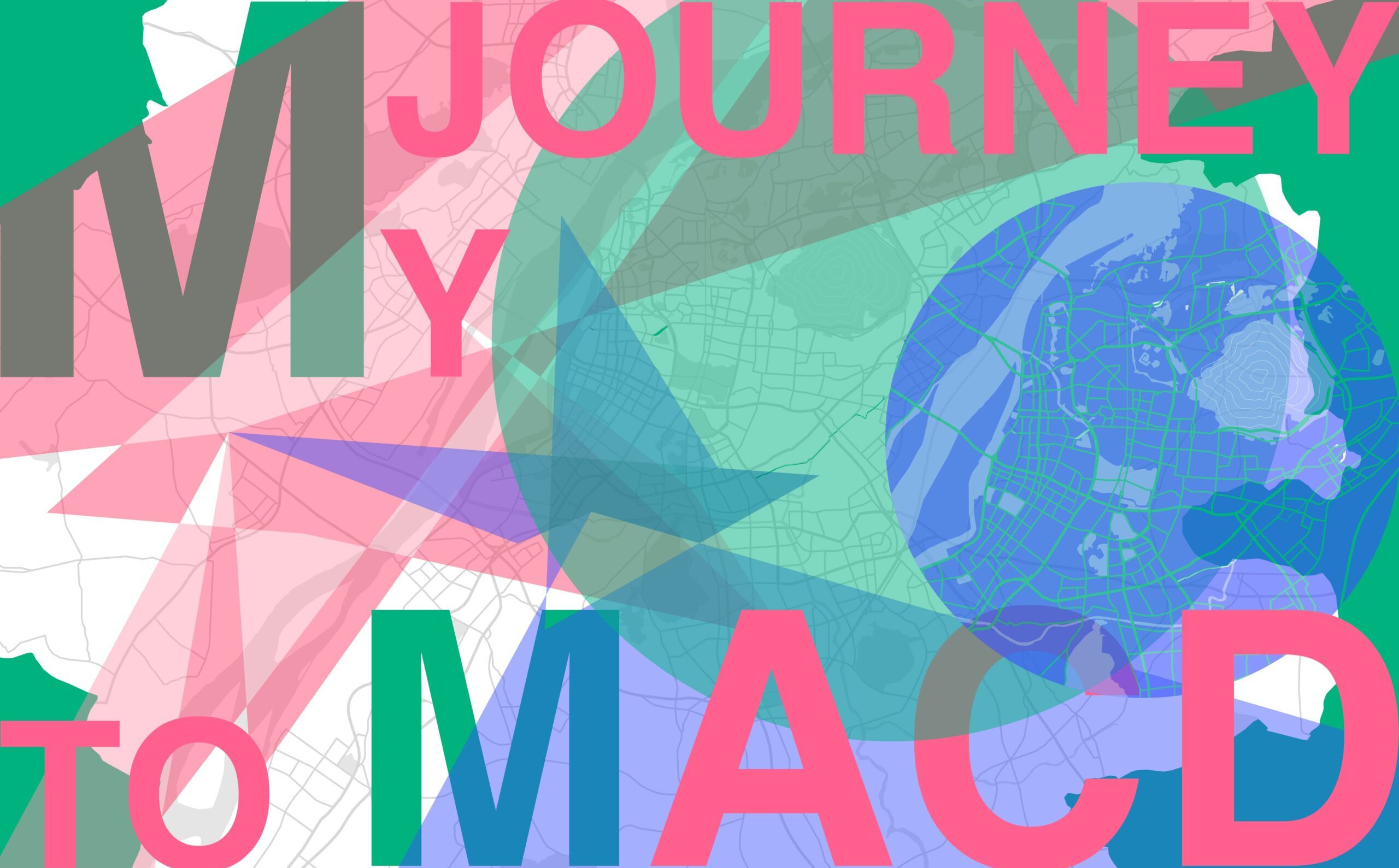Section one: What did I do, read, see?
After more than three months of study, I have completed four project assignments and 10 blog tasks in the course of Design and New Media. The continuous advancements and interactions between these tasks gradually made each of my project completed smoothly and steadily.
First, I will talk about my four projects in the following:
For the first project, I made a map of myself, which introduced the places and journeys where I had learned English and art since I was six years old. The project was completed by establishing the mind map, determining the direction, designing the layout and sketches, then finishing the output. Finally, I extracted my journey line on the map as an element, converted the line into color blocks, and combined with the map elements to create a virtual background that can be used on Teams.
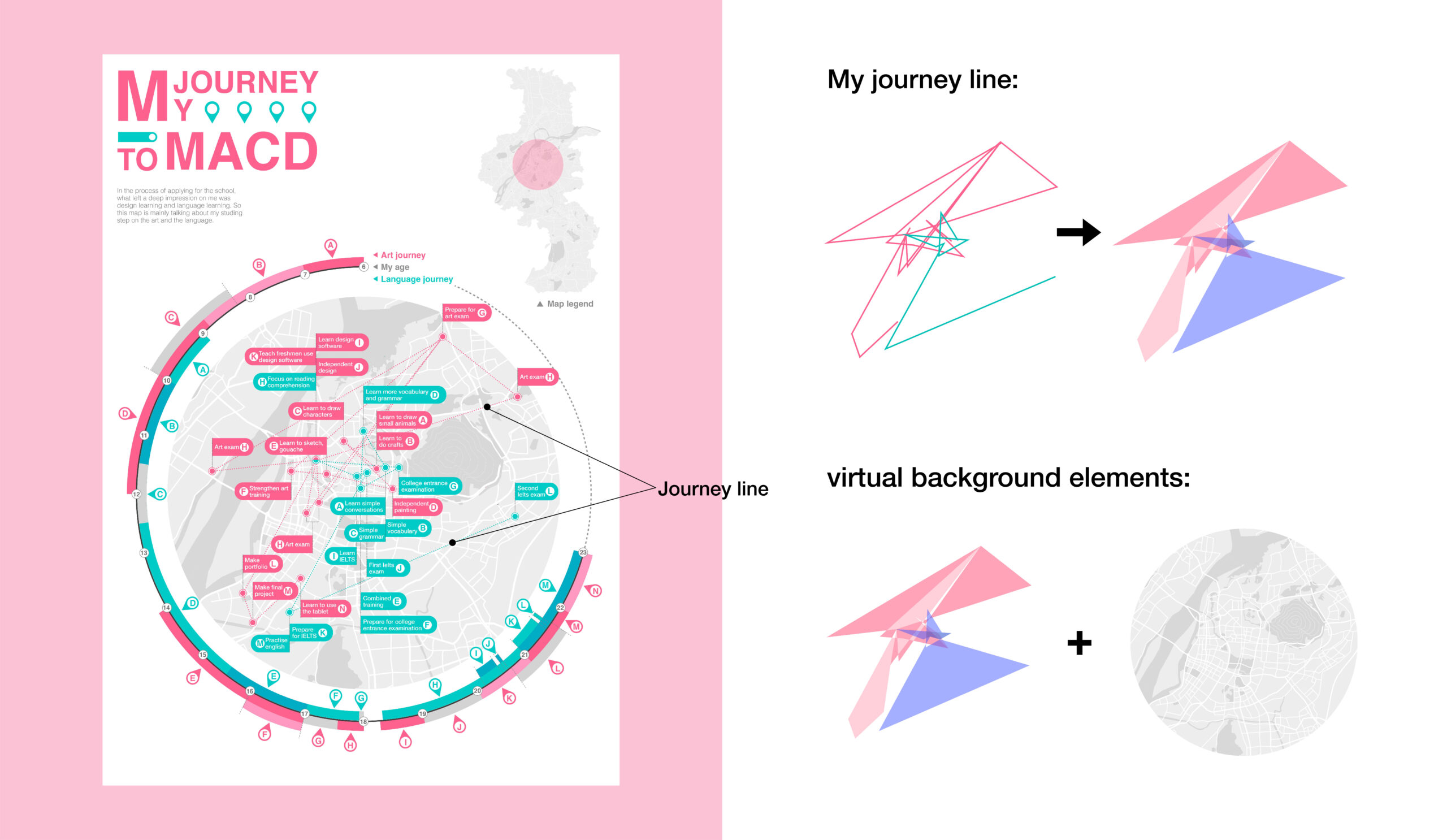
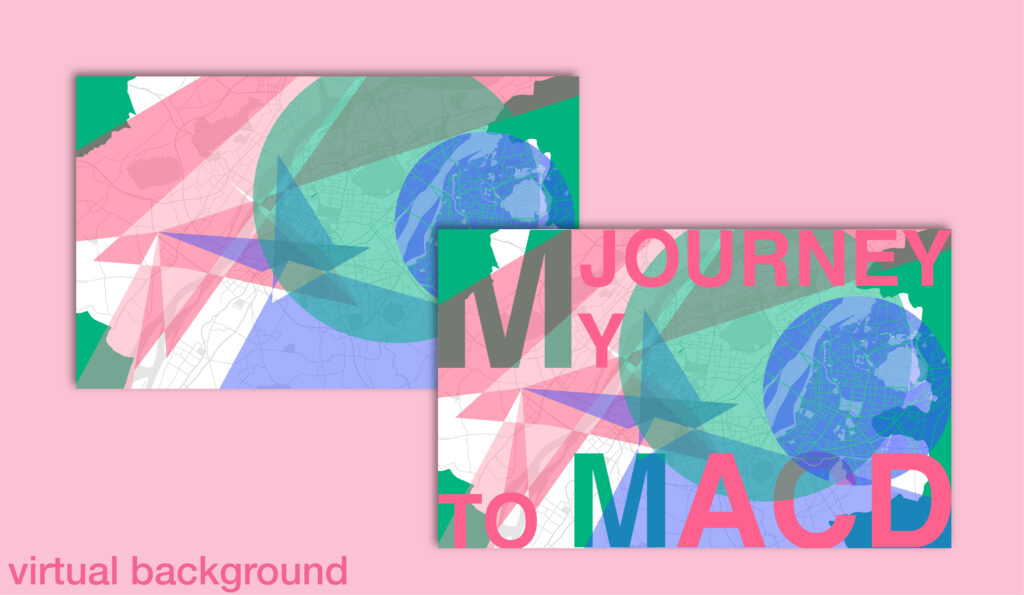
The second is a user research project, which investigates the causes, frequency and solutions of procrastination in people’s daily lives. First, a questionnaire was set up to investigate the people from 18 to 40+. After getting the data, I selected two groups of students and office workers to conduct a one-on-one interview survey. It mainly asked them about the main reasons of procrastination and the effective ways to cope with procrastination. I also recorded their daily work or study in real time to see when and what caused them to procrastinate. Based on these surveys, I made persona, user journey map and empathy map.
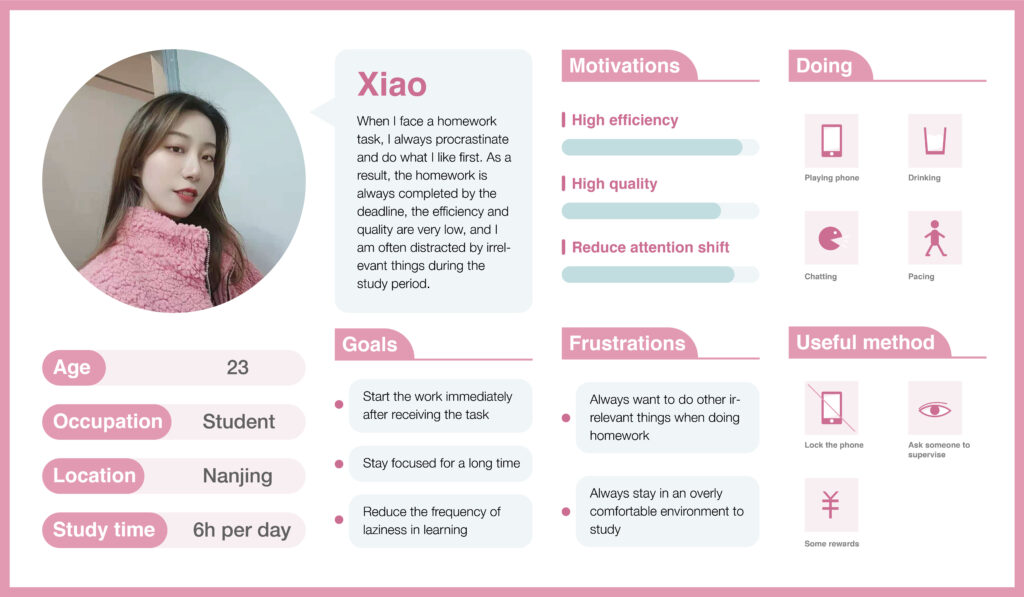
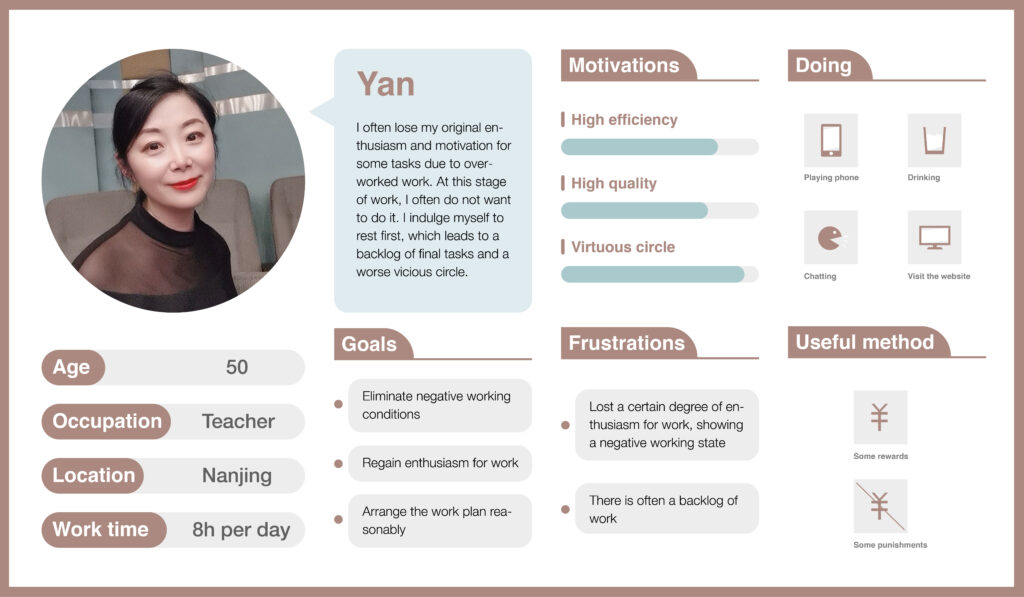
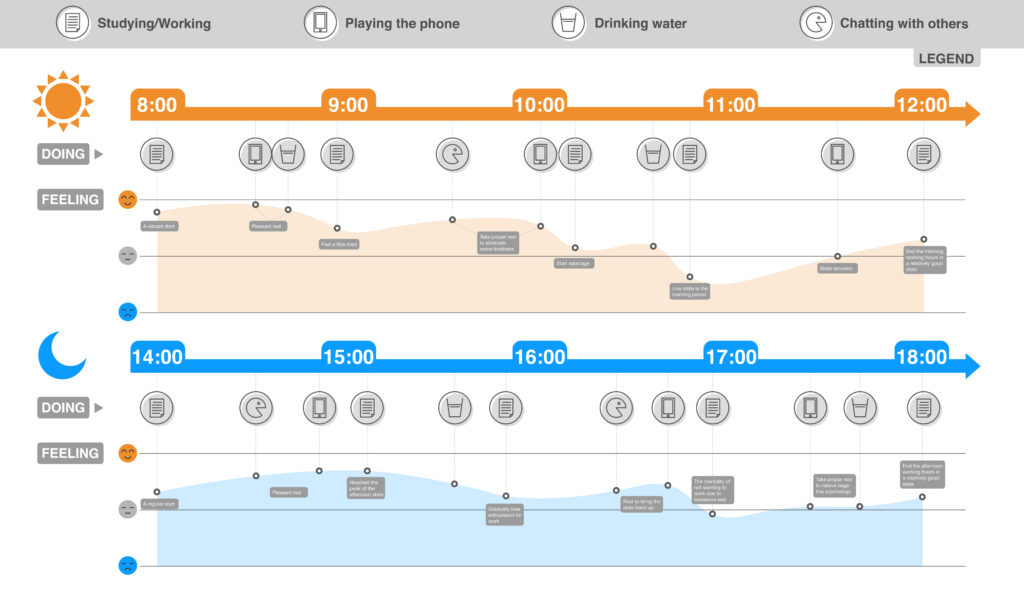
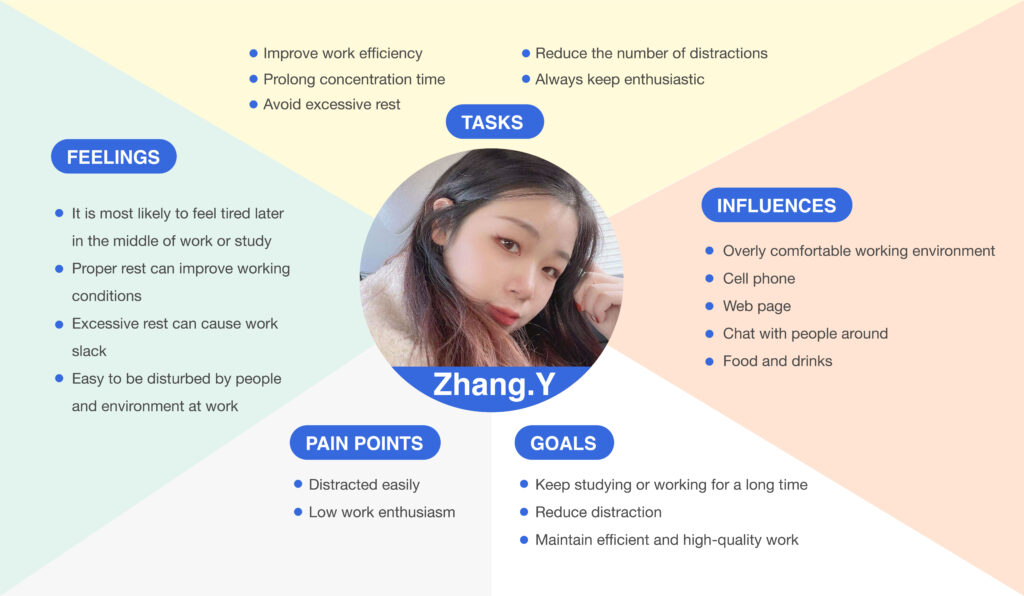
The third project is a continuation of the second project research process, the theme is to make an APP related to weather forecast. I chose skiers and mountaineering enthusiasts among the three target groups. I analyzed the occupations, activity venues, habits and some environmental factors of the two groups, then made a PACT analysis. Consequently, I made 2 personas about skiers and mountaineering enthusiasts, analyzed their different needs for weather forecasts and different problems they face during the activities. After analyzing the problem, I roughly designed the main functions of the APP, then drew the wireframe, followingly did the prototype for functional testing, and finally modified it.
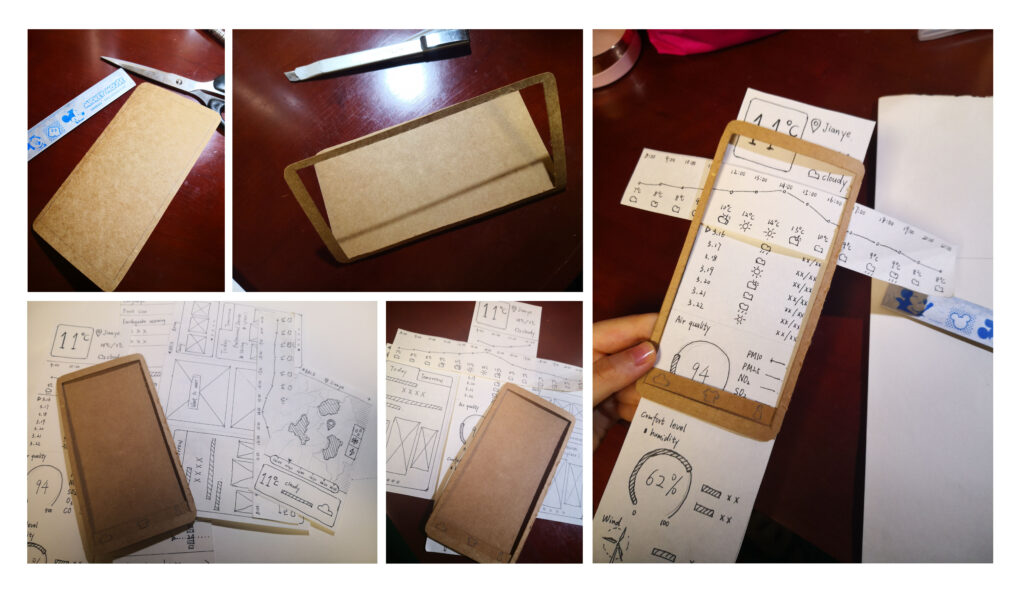
The fourth project is to conduct a new project based on the research process learned in the second and third projects. The theme I finally chose was related to environment protection. At the beginning, I established the entry point as art exhibition by the way of mind mapping. Therefore, I visited two art exhibitions in Shanghai during the Easter holiday, then conducted interviews with target groups. Three main problems were identified: waste of resources, waste of time, and waste of space. In the end, I chose the waste of time as the project problem and designed an online queuing app.
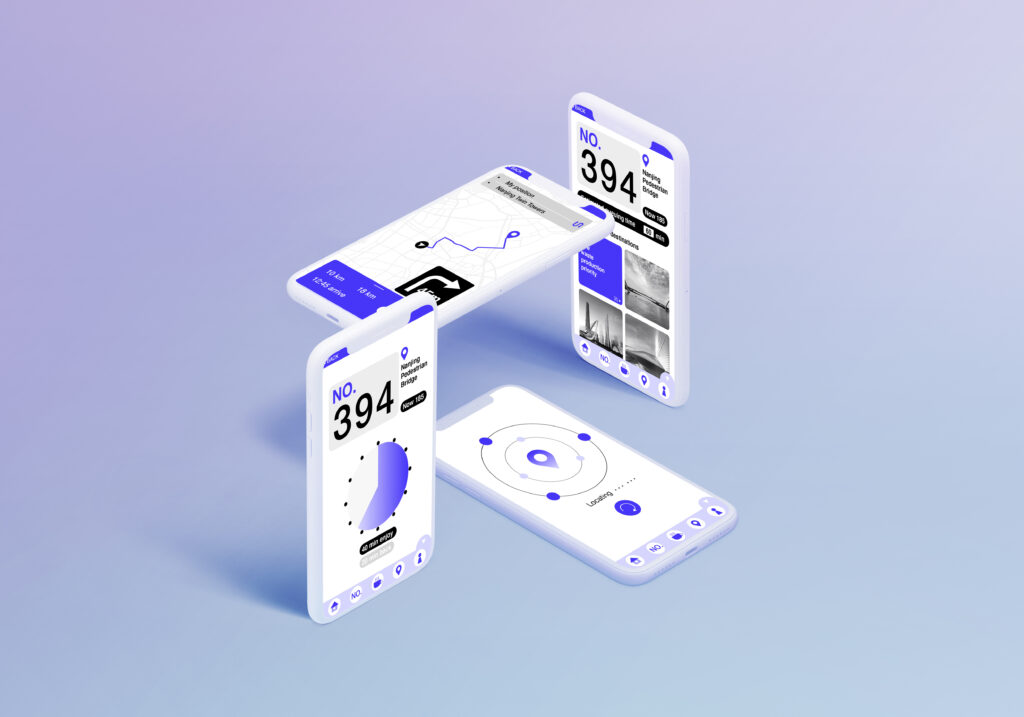
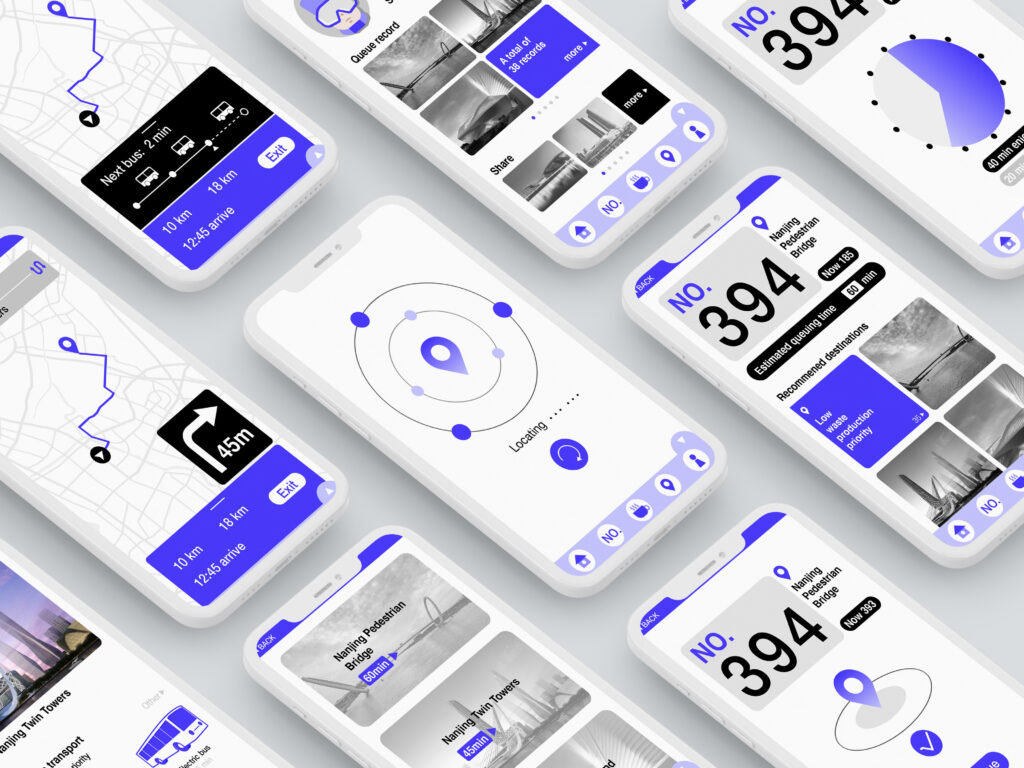
Secondly, I will talk about my blog tasks: In each of the 10 blogs, I learned some professionally technical knowledges that will be used in design, such as insight, affordance, etc. I read each article and applied the knowledge I have learned in the four projects.
Section two: The purpose of the project and their significance
These projects are user-centered research and design. Designers need to use their own insights (Krashen, S. D. ,2004) to find user problems, solve user needs, and ensure that users can improve their quality and level of life with the help of the project.
For the second project, I hope to solve the problem of procrastination that users encounter in their daily lives through user research. Help users improve procrastination through rewards, punishments, or time constraints to increase their working and learning efficiency. The third project is to add and improve the functions of the existing weather APP, then use new functions to solve the problem that the skiers and mountaineering enthusiasts cannot receive timely weather information due to the unstable network and the inability to check mobile phones in time. It allows them to accurately grasp the weather conditions during activities to ensure their own safety.
The purpose of the last project is to enable users to use their time effectively and reasonably and reduce the waste of time caused by the limitation of space and behavior when they encounter a long queue. At the same time, to raise users’ awareness of environment protection, the function of environment-friendly transportation and consumption is added, which could indirectly play a role in environment protection.
Section three: Self-evaluation and reflection on the works
Through the study of this course, I have gained a lot of knowledge. Especially in the part of user research, I have learned how to solve different problems according to the needs of different users. I used to focus on outputs when I did projects. However, through the study of this course, I have found that the process is more important than the product. The beauty of the product, the way of presentation, etc. are not so important compared to the process. If there is no good process research to support it, no matter how beautiful the product is, it is prone to problems. In the past, I thought that the benchmark of a good design was beauty. Nevertheless, after learning, I think that the benchmark of design is to serve the target group: the service object of interaction design is the user, the service object of book design is the reader, and the service object of stage design is the audience. Therefore, no matter what the design is, the key is to thoroughly investigate and analyze the target users.
Reflecting on my four projects, I think that each project has advantages and disadvantages:
Since the first project was completed before studying the research steps, it was obvious that I pursued the performance of output more than the process, so that my thinking and sketches were not so rich and comprehensive. But I think that I have done a good job in the details and logical expression of the output. After that, I will keep the rigorous part in the details and improve the richness of the process.
In the second and third projects, I think the research processes of both two projects are very complete, and the analyses of users are more thorough. But in the third project, the design of the main functions of the APP was not careful, and the thinking was not divergent. If I have a chance to improve this project, I will make the function of “recording weather conditions when there is no network” more flexible. For example, when the mobile phone detects the network, it will automatically switch to the network mode to ensure the accuracy of data updating.
For the fourth project, I think I have successfully solved the users’ “Queuing” needs, but the interactions between the user and the environment through the APP have not been very perfect. In the project, the options of ” Priority of Environment-friendly Destination ” and ” Priority of low-carbon Transportation” are provided, which can alleviate environmental pressure to a certain extent. However, people’s subjective consciousnesses and behaviors are difficult to change only through priority options. As for the improvement of this project in the future, I will start from improving users’ behaviors and awareness of damaging the environment. For example, when queuing, users will be rewarded for environment-friendly behaviors, and warned for environment-damaging behaviors, consequently solving environmental problems to a greater extent, and deepening the interactions between people and the environment.
The projects I have done are all based on the users’ needs, accompanied by discovering, investigating and solving the problems that users encounter in different scenarios and events. Designed on the principle of “user-centered”, they meet the needs of users to the greatest extent and realizes the meaning of the project.
Section four: The impact of this course on my future study and life
Through the study of this course, I have mastered a complete design process: brainstorming, determining the direction of the topic, analyzing and researching, establishing the theme, investigating the target user, identifying the main problem, conceiving the solution, then starting to design the visual part according to the method, and finally complete the project. Through this set of process, I found that the most critical and time-consuming part of project design is not the implementation of the design, but the series of foundations laid before. In the future study and design life, I will completely use this design process to learn and practice, ensuring that each of my projects are solid. Moreover, learning this design process is not only helpful for my design study, but also useful for me to optimize my logical thinking. Maintaining a clear mindset when discovering, thinking, and solving problems in the future will help to improve the efficiency and quality of my work and study.
Reference
Krashen, S. D. (2004). The power of reading: Insights from the research: Insights from the research. ABC-CLIO.
